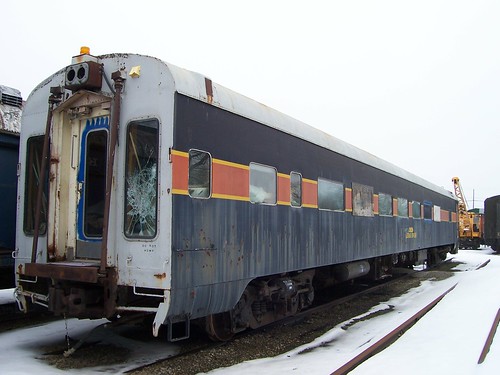America’s transit systems require $77.7 billion just to reach a state of good repair
 |
| Old Train Car with Broken Glass Originally uploaded by The Upstairs Room to Flickr. |
Failure to keep up with regular maintenance and repair in many of our country’s public transportation systems due to tightened budgets is literally slowing us down, through longer commutes, unreliable service and reduced access, exacerbating the effects of a down economy and high unemployment.
This is part of what prompted Transportation Secretary Ray LaHood to seek a report on the cost of bringing our nation’s transit systems into a state of good repair.
The Federal Transit Administration study reveals chronic underinvestment in the nation’s transit systems and estimates $77.7 billion is needed just to rehabilitate what we already have. Unfortunately, that figure is more of a floor than a ceiling. The $77.7 billion would simply modernize and repair existing transit systems, without even beginning to build the tracks or build the new projects urgently needed to keep up with burgeoning demand.
Sadly, we are nowhere near where we need to be.
Rather than matching the needed level of investment, public transit spending in 2008 clocked in at less than $13 billion. According to the FTA, “the Study’s findings — in particular the magnitude of the investment backlog — emphasize the need for a more comprehensive understanding of transit reinvestment needs.”
The New York Times echoed that theme in a recent story. The Times noted a recent incident on Maryland’s commuter rail system (MARC) in which 900 commuters on a train home to Maryland from Washington, D.C. were stuck near Union Station for two hours, with temperatures reaching as high as 110 degrees. One especially disgruntled rider ventured that air-conditioned jails in Georgia would be preferable to staying on the train.
Though important, this isn’t just about comfort. Millions of Americans, young and old, urban and rural, rely on transit system each day to get to work, school or other daily needs. Disruptions to these services are much more serious than a mere inconvenience. In tough times, we should be making it easier for people to go about their lives and get to work, but chronic underinvestment in transit is making these things harder instead.
One of the biggest contributors to incidents like those on the DC Metro is simply the age of the equipment. Every year, the price of buying new parts and repairing rail lines goes up, and every year the upgrades or repairs don’t happen, keeping the trains running becomes more expensive and difficult.
Despite this, the Times notes that “the federal government is unlikely to step in to help the strapped city, state and local transit agencies,” despite what AASHTO spokesman Tony Dorsey described as “the perfect storm” that is “causing people in the transportation industry to feel very concerned.”
The Times’ outlook aside, there is a plan in Congress to provide aid to struggling agencies hit hard by shrinking state and local budgets. T4 America has strongly encouraged Congress to pass the Public Transportation Preservation Act, which would provide $2 billion in emergency operating funds to help keep systems afloat during this crisis of state and local budgets, as the Times noted.
Whether this bill passes or not, Congress must keep the FTA’s sobering numbers in mind when moving to reauthorize the nation’s surface transportation bill. Some will surely ask whether we can afford these investments, but the question we should be asking is how we afford not to make them.




















No Comments